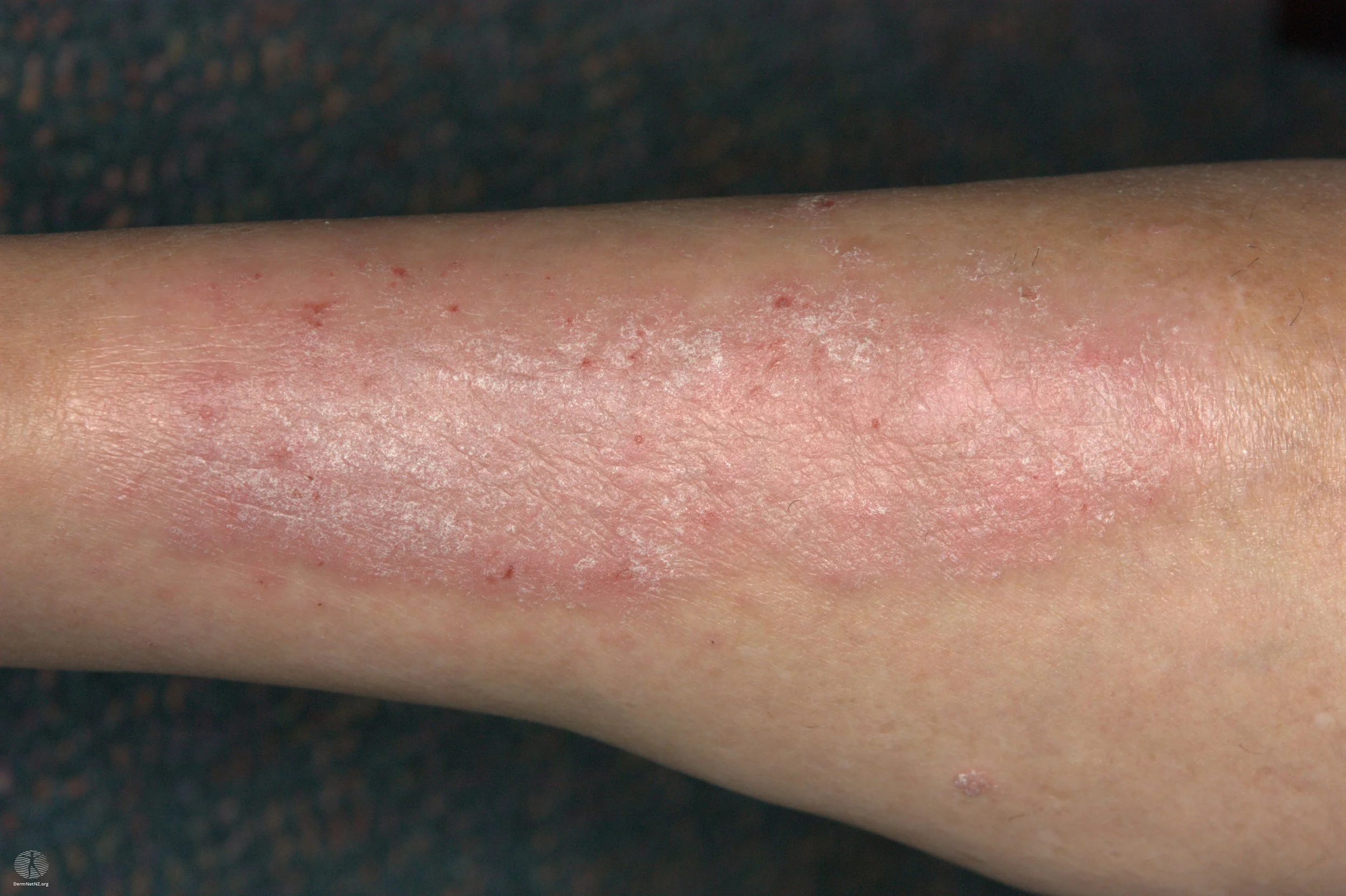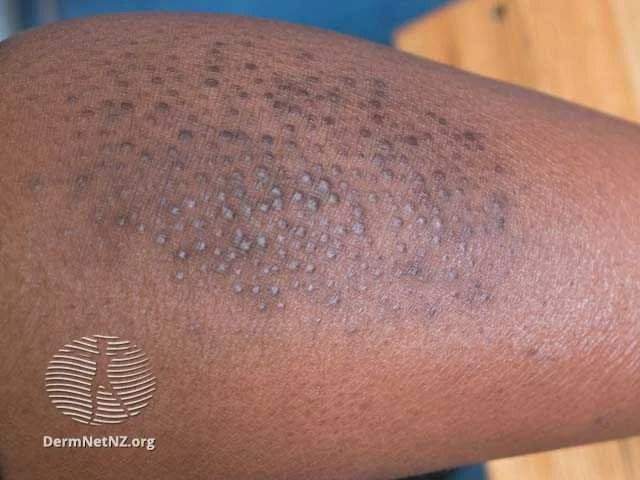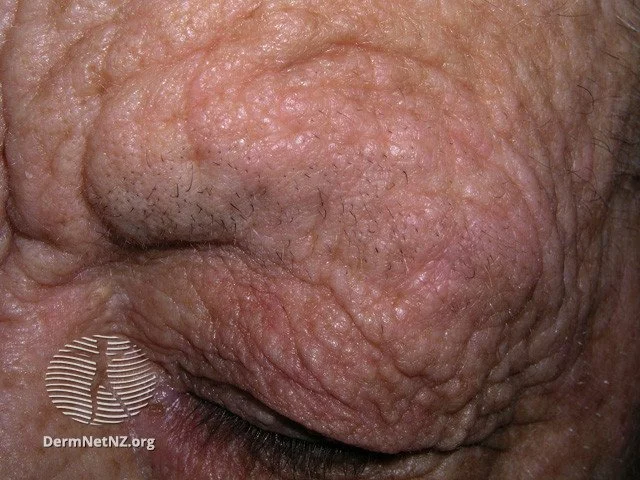
Lichen Simplex Chronicus (Neurodermatitis)
An example of lichen simplex chronicus (LSC), a condition that makes the skin look thickened, and the chronic itching and irritation is apparent.
Credit: DermNet NZ
What is lichen simplex chronicus?
Lichen simplex chronicus (LSC) is a dermatological condition characterized by persistent itching and subsequent scratching of the skin, leading to a thickened, leathery appearance. While an initial skin issue often triggers the itching, the act of scratching becomes habitual, leading to a cycle of itch-scratch that can be challenging to interrupt. It's worth noting that lichen simplex chronicus is distinct from prurigo nodularis, a somewhat related condition.
What causes lichen simplex chronicus?
The condition originates from a scratch-itch cycle. An initiating factor, such as a pre-existing skin condition (e.g., eczema, contact dermatitis, or psoriasis) or an irritant (e.g., abrasive clothing), can induce itching. Persistent scratching thickens the skin, which exacerbates the itchiness. Individuals with underlying psychological stress or anxiety may be predisposed to such compulsive itching behaviors and might not be consciously aware of their scratching habits, especially during sleep.
What are the symptoms of lichen simplex chronicus?
Afflicted individuals experience an irresistible urge to scratch specific areas of their body persistently. Commonly affected regions include the neck, scalp, ankles, vulva, pubis, scrotum, and forearms. The constant scratching leads to visible, often leathery skin changes, which may be a source of embarrassment. As a result, some individuals may be reluctant to disclose the extent of their scratching behavior.
How do I treat lichen simplex chronicus?
The primary objective in treating lichen simplex chronicus is to alleviate the itching and prevent further skin damage. Treatment strategies include:
Occlusion: Protecting the skin by covering it to deter scratching.
Topical steroids: To reduce inflammation and itchiness.
Steroid injections: Administered directly to the lesion for potent localized relief.
Moisturizers: To hydrate the skin and reduce dryness-induced itching.
Cooling creams: Provide a soothing sensation that can deter scratching.
Antihistamines: Such as loratadine or diphenhydramine, to address the underlying itch.
Tricyclic antidepressants: Like amitriptyline or nortriptyline, which have antipruritic properties.
N-Acetyl Cysteine: A supplement that can help mitigate compulsive skin-scratching tendencies.
How do I prevent lichen simplex chronicus?
To prevent the skin changes and discomfort associated with lichen simplex chronicus, consider the following preventive measures:
Scratching Avoidance: Actively resist the urge to scratch.
Trimming Nails: Keeping nails short reduces the damage potential from scratching.
Stress Management: Engaging in relaxation techniques can reduce itch-inducing stressors.
LSC can present as bumps with pigmentation on easy to reach areas.
Credit: DermNet NZ
LSC on the eyebrow - the lack of hairs in the area are a good indication of chronic rubbing and scratching.
Credit: DermNet NZ



